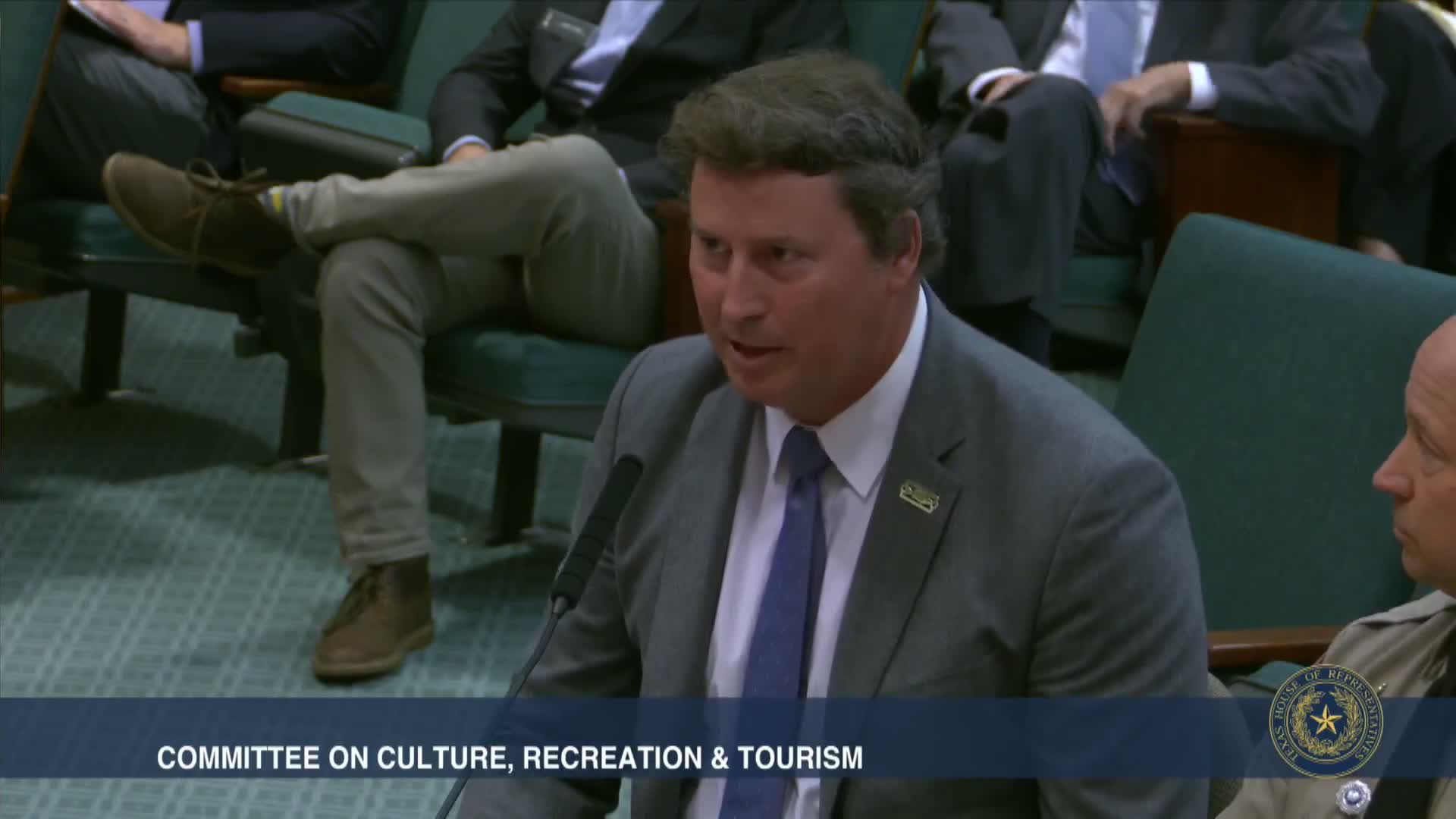Texas Officials Launch River Restoration Efforts After Flooding in Kerr County
June 08, 2025 | All Committees 2025, HOUSE OF REPRESENTATIVES, Legislative, Texas
This article was created by AI summarizing key points discussed. AI makes mistakes, so for full details and context, please refer to the video of the full meeting. Please report any errors so we can fix them. Report an error »

In the heart of Kerr County, a dedicated effort is underway to restore the natural beauty and ecological health of local river systems, following the devastating floods that have impacted the region in recent years. The Texas House of Representatives' Committee on Culture, Recreation & Tourism convened on June 8, 2025, to discuss the ongoing initiatives aimed at revitalizing these vital waterways, particularly in the wake of the 2015 Blanco River floods and subsequent flooding events.
The meeting highlighted the extensive resources mobilized to support river restoration, showcasing a collaborative approach involving landowners, conservation professionals, and state agencies. Since the 2015 floods, which uprooted large cypress trees and disrupted the delicate balance of the river ecosystem, significant investments have been made in technical guidance and planning assistance. Programs like the Landowner Center and the Farm and Ranch Lands Conservation Program have been pivotal in engaging local landowners, providing them with the tools and knowledge necessary to protect and restore riparian areas.
Over the past three years, the Texas Parks and Wildlife Department (TPWD) has organized 16 workshops, reaching approximately 500 landowners. These sessions focused on best practices for managing forested buffers and riparian zones, essential for maintaining wildlife habitats and water quality. Participants were provided with over 18,000 plants, including tree saplings, to support their restoration efforts.
The committee also discussed the resilience of local fish populations, particularly the Guadalupe Bass, Texas's state fish. Tracking studies conducted during the floods revealed that many fish remained in their habitats, finding refuge in slower-moving waters. This adaptability underscores the importance of maintaining healthy river corridors, as fish and wildlife can recover if their environments are restored.
As the meeting progressed, the committee emphasized the need for ongoing community engagement. Local partners are organizing additional workshops to ensure landowners have access to the resources necessary for effective river management. The TPWD is also preparing for public scoping meetings this fall to gather input on conservation plans and assess the impacts of flooding on navigation and recreational activities.
The commitment to restoring Kerr County's rivers reflects a broader understanding of the interconnectedness of ecosystems and the communities that rely on them. As these efforts continue, the hope is to not only heal the scars left by flooding but to foster a sustainable future for both wildlife and residents alike.
The meeting highlighted the extensive resources mobilized to support river restoration, showcasing a collaborative approach involving landowners, conservation professionals, and state agencies. Since the 2015 floods, which uprooted large cypress trees and disrupted the delicate balance of the river ecosystem, significant investments have been made in technical guidance and planning assistance. Programs like the Landowner Center and the Farm and Ranch Lands Conservation Program have been pivotal in engaging local landowners, providing them with the tools and knowledge necessary to protect and restore riparian areas.
Over the past three years, the Texas Parks and Wildlife Department (TPWD) has organized 16 workshops, reaching approximately 500 landowners. These sessions focused on best practices for managing forested buffers and riparian zones, essential for maintaining wildlife habitats and water quality. Participants were provided with over 18,000 plants, including tree saplings, to support their restoration efforts.
The committee also discussed the resilience of local fish populations, particularly the Guadalupe Bass, Texas's state fish. Tracking studies conducted during the floods revealed that many fish remained in their habitats, finding refuge in slower-moving waters. This adaptability underscores the importance of maintaining healthy river corridors, as fish and wildlife can recover if their environments are restored.
As the meeting progressed, the committee emphasized the need for ongoing community engagement. Local partners are organizing additional workshops to ensure landowners have access to the resources necessary for effective river management. The TPWD is also preparing for public scoping meetings this fall to gather input on conservation plans and assess the impacts of flooding on navigation and recreational activities.
The commitment to restoring Kerr County's rivers reflects a broader understanding of the interconnectedness of ecosystems and the communities that rely on them. As these efforts continue, the hope is to not only heal the scars left by flooding but to foster a sustainable future for both wildlife and residents alike.
View full meeting
This article is based on a recent meeting—watch the full video and explore the complete transcript for deeper insights into the discussion.
View full meeting
